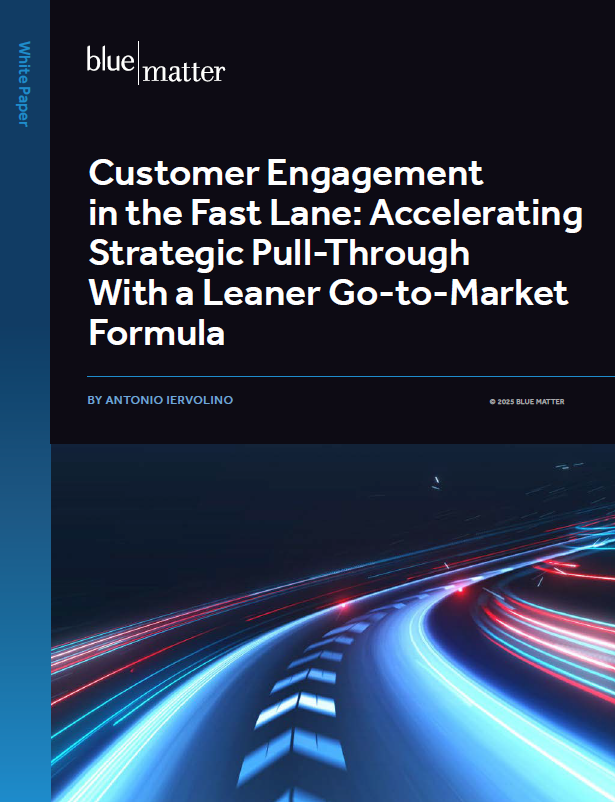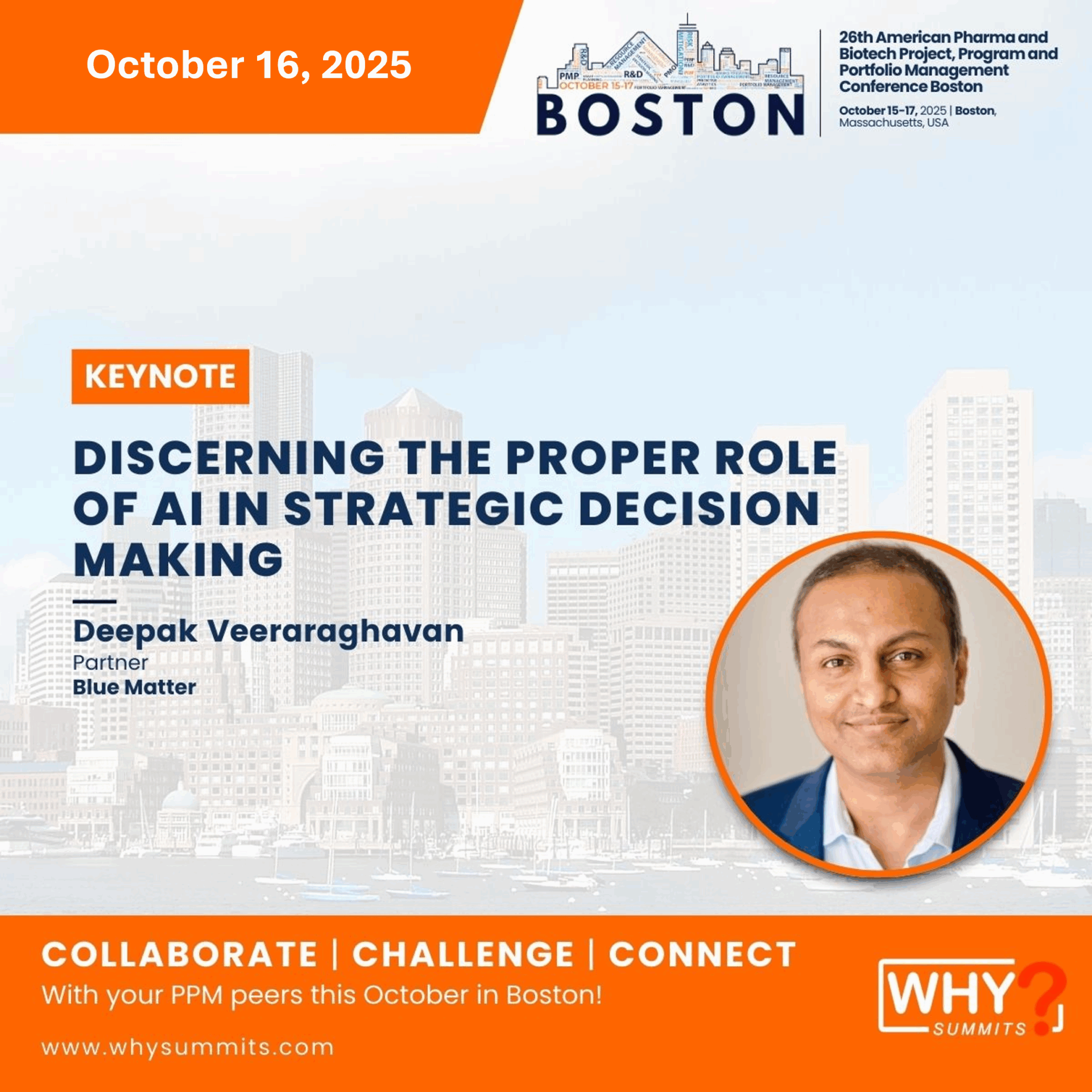
Emerging, development-stage biopharmaceutical companies often face a combination of excitement and apprehension when they begin to think about the next step in their journey. The excitement comes from working with innovative therapies that could make a significant impact for patients and the company’s potential for growth and development. The apprehension is often due to the seemingly endless potential paths forward that the company could take – strategically, scientifically, and/or commercially – and the lack of clarity on the right path forward.
In the first article of this series, we introduced seven “make or break” factors for emerging biopharma companies that are key to long-term success. In this installment, we begin the process of exploring each of those factors in some detail. The first factor on our list: Educating and Aligning Internal Decision-Makers.
Why This Factor is Important
Every biopharma company is unique, so making generalizations can sometimes over-simplify things. However, it’s also important to acknowledge that early-stage biopharma companies often share common traits. For many companies, one of those traits is a leadership team with strong scientific and financial backgrounds that is focused on progressing lead molecule(s) through clinical development. However, a leadership team with this composition may not appreciate the importance of the commercial perspective when making decisions – even very early decisions that, on the surface, seem to address purely scientific matters.
For the purposes of this series, we will define the “commercial perspective” as having a few distinct but related parts:
- Deeply understanding who the customers are and what they need
- Identifying and characterizing the nuanced opportunities and challenges in meeting those customer needs
- Shaping products, markets, and organizations to best address customer needs
Unfortunately, many leaders in early-stage companies often discount (or ignore) the commercial perspective because they view most of the decisions in front of them as scientific or financial in nature. Usually, there is a misperception that a commercial perspective is “just sales and marketing” and therefore starts to become relevant as a company prepares for launch. However, even early decisions around clinical development planning and corporate strategy can and should be informed by deep customer insights and the implications for the broader organization.
In a future installment, we’ll dive deeper into those decisions and the importance of informing them with the right customer insights. For now, though, we’ll focus on the need to ensure that internal decision makers are fully educated and aligned on the importance of integrating the commercial perspective early. Bringing it on too late can result in negative downstream implications, which may include:
- Clinical trial design and data that does not meet the needs of physicians, payers, or other stakeholders
- Having a competitive disadvantage due to mischaracterizing the current and future competitive landscape
- Sub-optimal market access and reimbursement
- Slow and/or limited market uptake after launch
- Reduced positive impact on patient care
Even if a leadership team leverages commercial input early, a lack of alignment can create unnecessary friction that can prevent the company fully realizing the value that it brings.
So, this factor is quite important. The question is, how can a company create the necessary alignment?
Keys to Aligning Leadership and Other Stakeholders
As the title of this article suggests, building the necessary alignment is really a challenge of education and communication. If anyone on the leadership team possesses an understanding of what “commercial” is and why it’s important to have that perspective early, it may become their responsibility to help educate other leaders in the company. When doing this, there are a few key things to keep in mind:
Education / alignment isn’t a “one and done” proposition
Educating the organization is a long-term effort for two main reasons: the existence of multiple stakeholder groups, and the need to engage most stakeholders / groups multiple times.
Education must start with the senior leadership team. After all, they will be driving most key decisions early on and should be fully aware of why and how to leverage commercial input to inform them. Furthermore, the leadership team will be responsible for leading the rest of the organization through change, which often requires alignment across a broader range of stakeholders.
For example, as a company’s product(s) move through clinical development, various stakeholders in R&D must understand and appreciate the value of moving beyond the perspectives of “friendly” KOLs who may have informed early clinical decisions to leveraging insights from real-world prescribers and payers who may require a different set of evidence. This awareness will encourage R&D decision-makers to embrace—or even seek out—commercial insights and form tighter working relationships between development, medical affairs, and commercial teams.
Additionally, many stakeholders will require multiple interactions to fully understand and buy in to bringing on the commercial perspective early. Understandably, people who are more resistant will require more engagement to shift their mindset – and it’s not uncommon to require alignment with these stakeholders on downstream decisions that benefit from commercial input.
Overall, organizational alignment occurs in stages over time, beginning with the leadership team and then fanning out from there. It never really ends.
Tailor your communication to your audience
As mentioned above, the effort to educate and align will reach different stakeholder groups over time. Each group will have its own perspectives and needs. As a result, the best ways to engage one group will likely not be the best for another.
Engaging Senior Leadership
Let’s start by discussing ways to engage the senior leadership team. Given their importance in shaping the direction of the organization, it is usually best to start engaging senior leaders in 1:1s to understand their current perception of “commercial” and share how it can be critical to the specific decisions they will have to make.
As individual leaders start to come on board with the need for a commercial perspective, it is often useful to engage the full leadership team to determine what the organization’s journey from R&D to commercialization will look like in practice, and how to bring the rest of the organization along on that journey. This can help the entire journey go more smoothly, as the leadership team presents a “united front” when leading the rest of the organization through change.
Engaging with R&D and Other Functions
As the company starts off on the journey towards commercialization, the leadership team usually needs to educate the broader organization—especially the R&D teams—on why the company is embarking on this journey and what it means for the company and individuals. Many people join clinical-stage companies for the scientific mission, and starting down a path towards commercial can sometimes make R&D professionals feel disconnected from that mission. Sometimes, those individuals can feel like their company is “selling out” or “becoming big pharma” and losing sight of the scientific focus that has been its legacy to date.
Therefore, it’s important for leaders to paint the picture of how commercial fits into the broader mission of the company and the ultimate benefit to patients, as well as continuing to recognize the ongoing efforts of the R&D team even as new functions are built. Related to this, it’s also helpful to get a very early start on communicating the company’s eventual intent to follow a path towards commercialization. That way, it becomes an expected part of the overall corporate narrative and lessens the perceived impact when it does begin to happen.
The messages used are also very important. For example, the journey to commercialization can be positioned as the natural next step to help fulfill the company’s overall scientific mission: R&D teams develop the cutting-edge products that will provide meaningful clinical benefit, while commercial and medical affairs teams help overcome market barriers to ensure those products have the desired impact on patients. Even when bringing the commercial perspective to clinical stage decisions, these are two halves of the same whole that share a common goal.
Throughout the process, it can be very helpful to share the input that has been gathered from HCPs, patients, and payers with members of R&D and other functions who don’t get the chance to regularly engage with those stakeholder groups. That helps to keep customer needs and perspectives front and center and provide tangible examples of the benefits of bringing the commercial perspective to scientific decision-making.
When educating the broader organization, larger forums are often useful to educate and provide transparency, such as a town hall meeting that includes discussion and open Q&A with leaders. Individual department and/or function leads can then pull through with their teams in standing team meetings to help surface and address any potential concerns.
Ultimately, the plan to engage and educate stakeholders will depend on the specific needs of the organization, with forums and messages tailored to the needs of each identified stakeholder group. Once you define the relevant stakeholders / stakeholder groups, you can effectively communicate with each one by:
- Understanding the current beliefs and perspectives of your audience, including any potential concerns
- Creating early alignment with the leader of that stakeholder group to ensure aligned messaging and pull-through
- Meeting your audience where they are: Communicating in your audience’s “language” and using formats and methods appropriate to them
- Always sharing the “why” and the “WIFM (what’s in it for me)”, explaining why commercial is important, why now, and the benefit it will bring to their role(s)
- Giving the audience a roadmap to help them understand the path forward
Coming Next
In our next installment, we will explore factor two: Generating the Most Important Customer Insights. Making good decisions requires a strong understanding of the customers and their needs. However, many emerging companies don’t gather the insights they need early enough to guide critical strategic decisions. We’ll examine the customers that companies must understand, when to engage them, and what to learn make the most informed decisions in the most efficient way.






